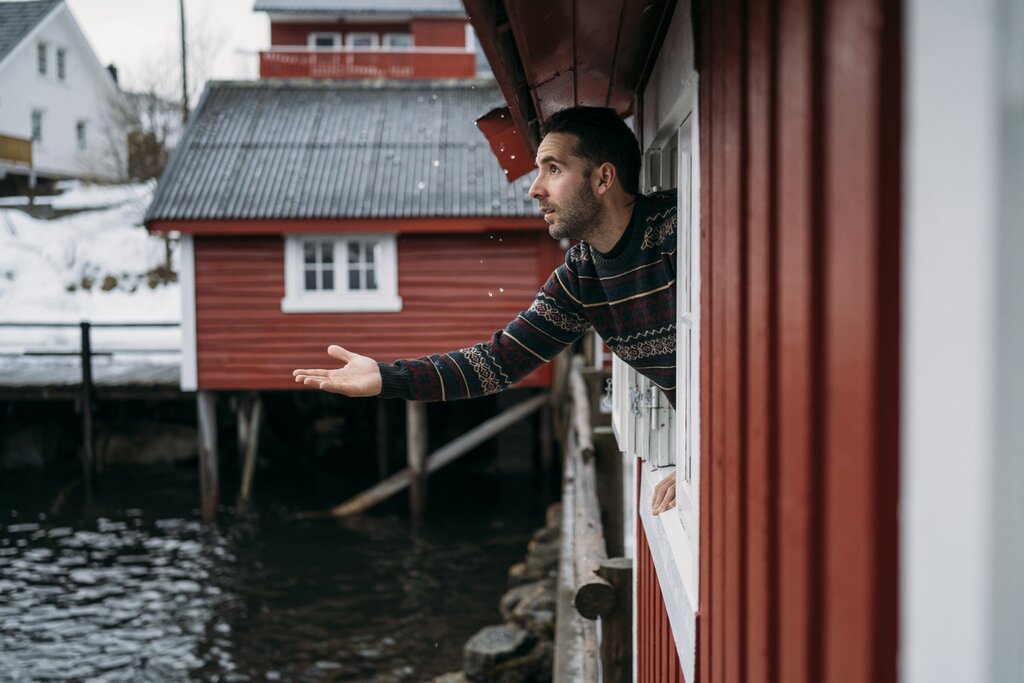Whether you're chasing the northern lights in Tromsø, skiing in the fjords, or strolling through a Christmas market in Oslo, layering is key to staying warm and comfortable. Think in threes: a base layer to stay dry, a mid layer to keep warm, and an outer layer to protect from the elements. Wear a moisture-wicking thermal base layer of wool, an insulating mid-layer of fleece or wool, and top it off with a waterproof and windproof outer shell. Insulated boots with good traction are a must, along with a hat, scarf, and gloves. Avoid cotton and denim, which retain moisture and lose insulation when wet.
When in doubt, pack one more layer than you think you'll need—Norway's winter weather can change quickly, especially between coast and mountain.
Winter Clothing Layers
Base layer (1st layer)
Start with a thermal base layer—long underwear and wool socks made from merino wool (soft and breathable, even for sensitive skin) or synthetic materials designed to wick sweat away from your skin. Avoid cotton, which traps moisture and chills you as soon as you stop moving.
Mid-layer (2nd layer)
Add warmth with a fleece, wool sweater, or lightweight down jacket. This is your insulation layer, designed to trap heat while allowing air to circulate. You might even want a second pair of woolen socks if you'll be outside for long periods.
Outer Layer (3rd layer)
Finish with a thick, insulated, waterproof, and windproof shell or parka. A hood is a must to block snow and sleet. Pair it with thermal-lined, windproof pants or ski pants for complete coverage from biting winds.
Chat with a local specialist who can help organize your trip.
Essential Accessories
Footwear: sturdy, waterproof hiking boots with ankle support and good grip are crucial for icy or slushy conditions. You may also want to bring lightweight ice grips or cleats that attach to your boots for walking on slick sidewalks.
Socks: bring several pairs of wool socks—your feet will thank you. Wool wicks moisture better than cotton and stays warm even when damp.
Headwear: a warm, windproof hat or beanie is key to conserving body heat. For Arctic regions, consider a balaclava or fleece-lined buff to protect your face and neck.
Handwear: pack waterproof and insulated gloves or mittens—mittens tend to keep fingers warmer in very cold conditions.
Extras: a scarf, neck gaiter, or buff helps protect against biting wind, and sunglasses (or goggles if you’ll be skiing) guard against glare from bright snow and ice.
What to Avoid
Cotton and denim: cotton clothing and denim jeans are poor choices because they absorb and retain moisture, making you cold, heavy, and uncomfortable.
Thin or non-insulated footwear: sneakers or non-insulated boots will quickly soak through and freeze your feet in Norway's snow or slush.
Umbrellas: an umbrella isn't your best defense. A waterproof hooded jacket is far more reliable and far less likely to blow inside out.
For more ideas on what to bring with you to the land of the midnight sun at any time of year, read our Norway Packing List.
